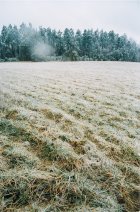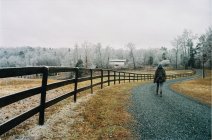*DUMBCAN*
Active member
Developing question:
This last few weeks I've been developing in my Uni's little darkroom instead of with my own stuff cos I'm out of some chemicals. It's all been fine up until today.
The film I used was HP5+, pushed to 800. Developed in D76, 20º for 13 minutes as instructed. No stop bath, ilford Hypam fixer.
The film came out translucent. Not full out opaque, it was the right colour, just you couldn't see through it. If you shone a light through you could tell that there was a light behind it.
Anyone know what went wrong?
This last few weeks I've been developing in my Uni's little darkroom instead of with my own stuff cos I'm out of some chemicals. It's all been fine up until today.
The film I used was HP5+, pushed to 800. Developed in D76, 20º for 13 minutes as instructed. No stop bath, ilford Hypam fixer.
The film came out translucent. Not full out opaque, it was the right colour, just you couldn't see through it. If you shone a light through you could tell that there was a light behind it.
Anyone know what went wrong?











